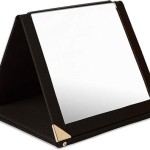How to Mirror Mobile Screen on PC Windows 10: A Comprehensive Guide
In today's technological world, it's often necessary to mirror your mobile screen on your PC for various reasons. Whether you're presenting a work project, sharing a video, or simply want a larger screen to work with, mirroring your mobile display on your Windows 10 PC can be an incredibly useful feature.
Windows 10 offers two primary methods for mirroring your mobile screen: through the Connect app and Miracast technology. This guide will cover both methods in detail, providing step-by-step instructions and troubleshooting tips.
Mirroring Mobile Screen Using Connect App
The Connect app is a built-in feature in Windows 10 that allows you to wirelessly connect your PC to other devices, including your mobile phone. To use the Connect app:
1.Ensure your mobile device is Miracast-enabled.
Most modern smartphones and tablets support Miracast, but it's always a good idea to check your device's specifications. 2.On your PC, open the Connect app.
You can find it by typing "Connect" in the Windows search bar or by navigating to Settings > Connected Devices > Add a Device. 3.Enable screen mirroring on your mobile device.
The steps may vary depending on your device, but generally, you can access these settings under Display or Screen settings. 4.Connect your devices.
On your PC, click on the name of your mobile device when it appears in the Connect app. On your mobile device, confirm the connection request. 5.Adjust display settings (optional).
After connecting, you can adjust the display settings on your PC to your preference. For instance, you can change the resolution or orientation of the mirrored screen.Mirroring Mobile Screen Using Miracast
Miracast is a wireless display standard that allows you to mirror your mobile screen on any compatible device. To use Miracast:
1.Ensure both your PC and mobile device support Miracast.
You can check this by checking the device specifications or using online tools. 2.Put your PC in Miracast mode.
On your PC, navigate to Settings > Display > Projecting to this PC. Under "Project to this PC," select "Available everywhere on secure networks" or "Available everywhere." 3.Enable screen mirroring on your mobile device.
The steps may vary depending on your device, but generally, you can access these settings under Display or Screen settings. 4.Connect your devices.
On your mobile device, search for available Miracast devices. Select the name of your PC to establish a connection. 5.Confirm the connection on your PC.
You'll receive a notification on your PC asking you to confirm the connection. Click "Yes" or "Accept" to complete the process.Troubleshooting Tips
If you encounter any issues while mirroring your mobile screen on your PC, try the following troubleshooting tips:
*Check if your devices are connected to the same Wi-Fi network.
*Restart both your mobile device and your PC.
*Ensure your mobile device is Miracast-enabled.
*Update the display drivers on your PC.
*Disable any firewalls or antivirus software that may be blocking the connection.
Conclusion
Mirroring your mobile screen on your PC Windows 10 can enhance your productivity and entertainment by providing a larger display for various tasks. By following the steps outlined in this guide, you can easily connect your devices and enjoy the benefits of screen mirroring. Remember to try the troubleshooting tips if you encounter any difficulties.

How To Cast Mirror Share Mobile Screen On Your Laptop Pc In Windows 10 11 2024 N A Tech

How To Mirror Android Pc

How To Mirror Iphone Windows Pc Laptop Mac Full Guide

Swiftly Cast Android To Windows 10 Pc With 5 Approaches

Windows 10 Help Forums

How To Mirror Your Android Windows 10 With The Connect App

Swiftly Cast Android To Windows 10 Pc With 5 Approaches

Microsoft Surface Debuts Supercharged Android Experience

An Easy Step By Guide To Mirror Android Windows 11

How To Mirror Android Screen Windows 11 Geeksforgeeks








